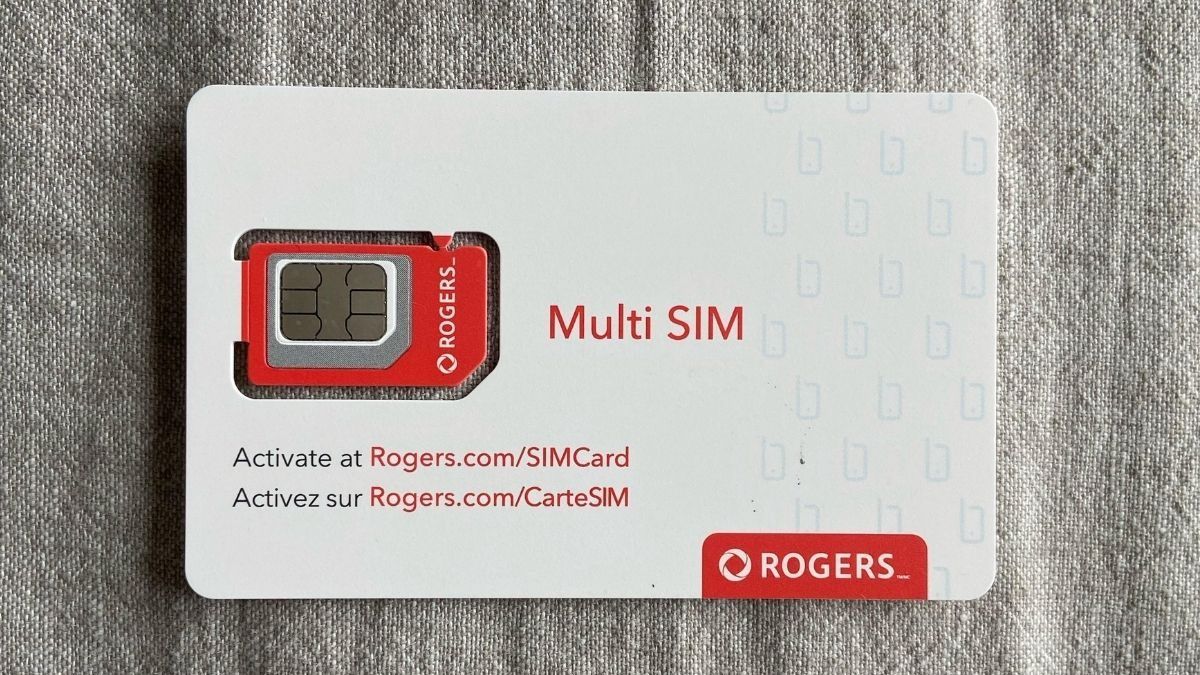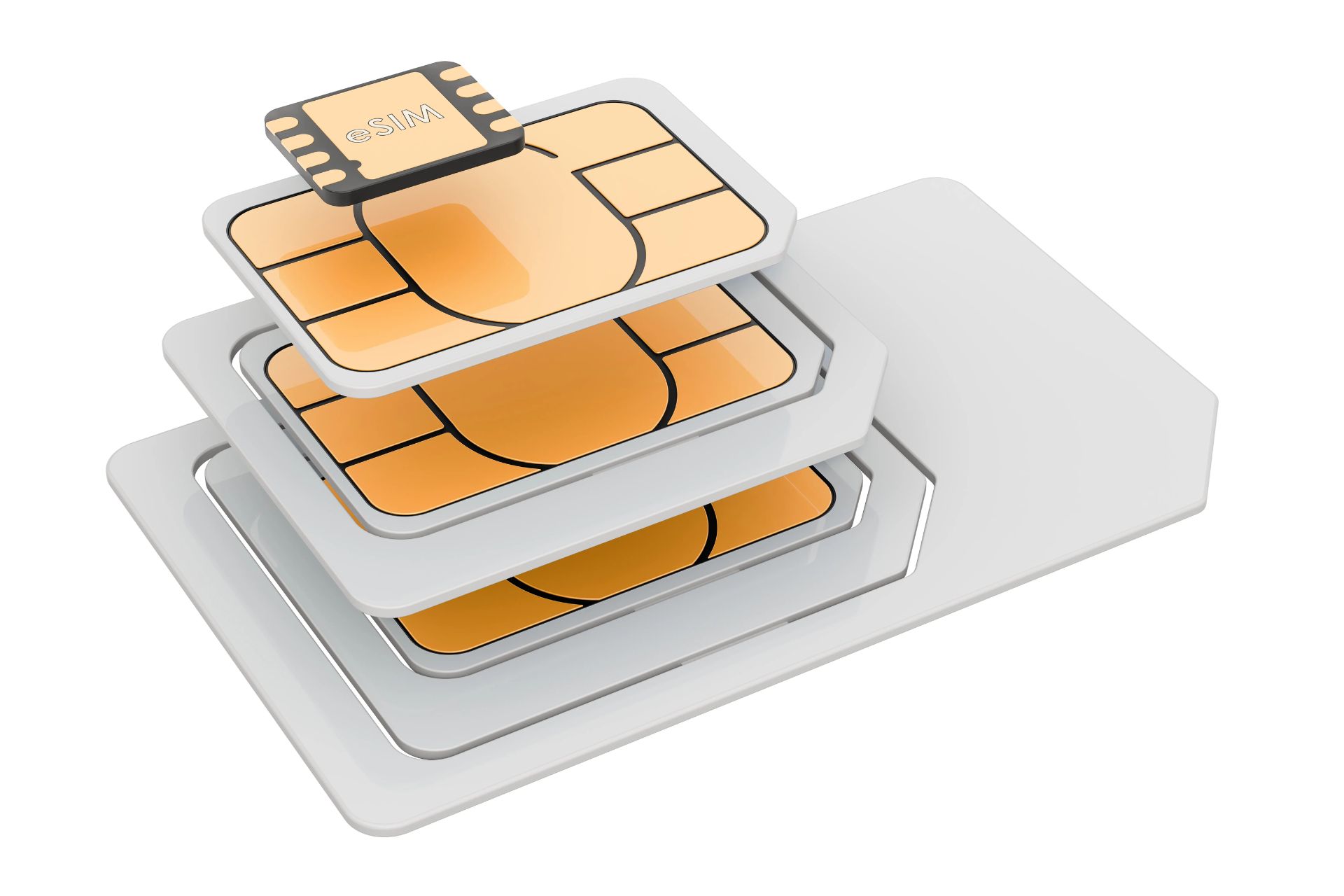What is eSIM?
eSIM, short for embedded SIM, is a revolutionary technology that is transforming the way we connect to mobile networks. Unlike traditional physical SIM cards, which are removable and can only be used with a single carrier, eSIM is embedded directly into a device, allowing for greater flexibility and convenience.
eSIM technology is designed to eliminate the need for a physical SIM card by replacing it with a virtual, programmable SIM that is built into the device itself. This means that users no longer need to fumble with tiny pieces of plastic when switching carriers or traveling internationally. Instead, they can simply activate a new mobile plan over the air, without the hassle of waiting for a physical SIM card to arrive in the mail.
One of the key advantages of eSIM is its ability to store multiple mobile network profiles simultaneously. This means that users can easily switch between different carriers and plans without needing to swap out a physical SIM card. For frequent travelers, this feature is particularly appealing, as it allows for seamless access to local mobile networks without the need to purchase and install a new SIM card in each destination.
In addition to its convenience, eSIM offers enhanced security features compared to traditional SIM cards. The programmable nature of eSIM technology makes it more resistant to tampering and fraud, reducing the risk of unauthorized access to the mobile network.
Furthermore, eSIM technology is paving the way for a new era of connected devices, enabling a wide range of IoT (Internet of Things) devices to connect to cellular networks without the need for physical SIM cards. This opens up exciting possibilities for smartwatches, fitness trackers, and other wearable devices to become more seamlessly integrated into the mobile ecosystem.
Overall, eSIM represents a significant leap forward in mobile connectivity, offering users greater flexibility, convenience, and security in managing their mobile network connections. As this technology continues to gain traction, it is poised to become the standard for mobile connectivity in the years to come.
Advantages of eSIM over Physical SIM Card
The transition from traditional physical SIM cards to eSIM technology brings forth a multitude of advantages, revolutionizing the way users connect to mobile networks. Here are the key benefits of eSIM over physical SIM cards:
1. Flexibility and Convenience
eSIM technology offers unparalleled flexibility, allowing users to switch between mobile carriers and plans without the need to physically swap out a SIM card. This means no more hunting for paperclips to open SIM card trays or waiting for a new physical SIM to arrive in the mail. With eSIM, activating a new mobile plan is as simple as a few taps on the device, providing instant access to a wide range of mobile networks.
2. Multiple Mobile Network Profiles
Unlike physical SIM cards, which are tied to a single carrier, eSIM can store multiple mobile network profiles simultaneously. This means users can effortlessly switch between different carriers and plans, ideal for frequent travelers or individuals who require separate personal and business phone lines. The ability to manage multiple profiles within a single device offers unprecedented convenience and versatility.
3. Enhanced Security
eSIM technology introduces advanced security features, making it more resistant to tampering and fraud compared to traditional SIM cards. The programmable nature of eSIMs reduces the risk of unauthorized access to the mobile network, bolstering overall security for users and mobile carriers alike.
4. Streamlined Connectivity for IoT Devices
eSIM technology extends beyond smartphones and tablets, enabling a diverse array of IoT devices to connect to cellular networks without the need for physical SIM cards. This seamless integration opens up new possibilities for smartwatches, fitness trackers, and a myriad of other connected devices, streamlining connectivity and enhancing the overall user experience.
5. Eco-Friendly Solution
By eliminating the need for physical SIM cards, eSIM technology contributes to reducing plastic waste and environmental impact. The shift towards eSIM aligns with sustainability efforts, offering a more eco-friendly approach to mobile connectivity while delivering unparalleled convenience and flexibility to users.
In summary, the advantages of eSIM over physical SIM cards are clear. This innovative technology empowers users with unprecedented flexibility, security, and convenience, while also driving forward a more sustainable approach to mobile connectivity. As eSIM adoption continues to expand, it is poised to redefine the way we connect to mobile networks, setting a new standard for seamless, secure, and versatile connectivity.
How to Activate eSIM
Activating an eSIM is a straightforward process that varies slightly depending on the device and mobile carrier. Here's a general guide on how to activate eSIM:
-
Check Device Compatibility: Before attempting to activate an eSIM, ensure that your device supports this technology. Most modern smartphones and tablets are eSIM-compatible, but it's essential to verify this with the device manufacturer or carrier.
-
Contact Your Mobile Carrier: Reach out to your mobile carrier to inquire about eSIM activation. They will provide you with a QR code, a confirmation number, or a specific app to download for eSIM activation.
-
Access eSIM Settings: On your device, navigate to the settings menu and look for the option related to cellular or mobile network settings. Within this menu, there should be an option to add a new cellular plan or activate eSIM.
-
Scan the QR Code: If your carrier provided a QR code for eSIM activation, use the device's camera to scan the code. This will initiate the activation process and configure the eSIM with the chosen mobile plan.
-
Enter Confirmation Details: In some cases, the carrier may provide a confirmation number or details to manually input into the device for eSIM activation. Follow the carrier's instructions to complete this step.
-
Complete the Activation Process: Once the QR code is scanned or the confirmation details are entered, the device will proceed to activate the eSIM. This process may involve downloading and installing the eSIM profile provided by the carrier.
-
Set Default Line (if applicable): If your device supports multiple eSIM profiles, you may have the option to set a default line for calls, messages, and data. This allows for seamless switching between different eSIM profiles, if necessary.
-
Confirmation and Testing: After the eSIM activation process is complete, ensure that the device recognizes the new mobile plan and displays the correct carrier information. Test the connectivity by placing a call, sending a message, or accessing mobile data to confirm that the eSIM is successfully activated.
It's important to note that the activation steps may vary slightly based on the specific device and carrier requirements. Always refer to the instructions provided by the device manufacturer and mobile carrier for precise guidance on activating eSIM.
By following these steps and leveraging the resources provided by the mobile carrier and device manufacturer, users can seamlessly transition to eSIM technology, unlocking the benefits of enhanced flexibility, convenience, and security in managing their mobile network connections.
Compatibility of eSIM with Devices and Carriers
eSIM technology has rapidly gained traction across a wide range of devices and is supported by an increasing number of mobile carriers worldwide. Compatible devices include modern smartphones, tablets, smartwatches, laptops, and a variety of IoT (Internet of Things) devices. As the demand for eSIM functionality continues to grow, device manufacturers are incorporating this technology into their latest offerings to provide users with enhanced connectivity options.
When it comes to smartphones, major manufacturers such as Apple, Samsung, Google, and Huawei have embraced eSIM technology, integrating it into their flagship devices. This enables users to take advantage of the flexibility and convenience offered by eSIM, allowing for seamless switching between mobile carriers and plans without the need for a physical SIM card.
Furthermore, eSIM compatibility extends beyond consumer devices to encompass a wide array of IoT devices. This includes smartwatches, fitness trackers, connected cameras, and even automotive applications. The integration of eSIM into these devices enables efficient connectivity to cellular networks, paving the way for innovative IoT solutions that leverage the benefits of eSIM technology.
In parallel with device compatibility, the support for eSIM among mobile carriers is expanding globally. Leading carriers in various regions are embracing eSIM technology, offering users the option to activate eSIM-based mobile plans and take advantage of the benefits it provides. This trend is particularly prominent in the realm of international travel, where eSIM enables seamless access to local mobile networks without the need for physical SIM card swaps.
Moreover, the compatibility of eSIM with carriers is not limited to consumer mobile plans. Many carriers are also extending eSIM support to enterprise and IoT solutions, catering to the evolving connectivity needs of businesses and organizations. This broadening support for eSIM among carriers underscores the growing significance of this technology in the mobile connectivity landscape.
As eSIM compatibility becomes more ubiquitous across devices and carriers, users are presented with a wealth of options for managing their mobile network connections. This seamless integration of eSIM technology into a diverse range of devices, coupled with robust support from mobile carriers, signifies a pivotal shift towards a more flexible, convenient, and connected future.
Security and Privacy Considerations
When transitioning to eSIM technology, it is essential to consider the robust security and privacy features that underpin this innovative solution. eSIM introduces a new layer of protection and privacy management, addressing key concerns related to unauthorized access, data security, and user privacy.
Enhanced Security Measures
eSIM technology incorporates advanced security measures that fortify its resistance to tampering, unauthorized access, and fraudulent activities. The programmable nature of eSIMs enables secure provisioning and management of mobile network profiles, reducing the vulnerabilities associated with traditional physical SIM cards. By leveraging secure authentication protocols and encryption techniques, eSIM technology safeguards sensitive user information and mitigates the risk of unauthorized network access.
Data Encryption and Privacy
With eSIM, the process of storing and transmitting user data is fortified through robust encryption methods. This ensures that personal and network-related information remains secure and private, minimizing the potential for data breaches and unauthorized interception. The encryption protocols employed in eSIM technology contribute to bolstering user privacy, instilling confidence in the secure management of mobile network connectivity.
Remote Management Capabilities
eSIM technology enables remote management of mobile network profiles, offering users the flexibility to activate, deactivate, and switch between eSIM-based plans with enhanced security measures in place. This remote management capability is designed to prevent unauthorized alterations to the eSIM profile, thereby reinforcing security and privacy safeguards. Additionally, remote management facilitates seamless updates and provisioning of eSIM profiles, ensuring a secure and efficient user experience.
Compliance with Regulatory Standards
In adherence to stringent regulatory standards and industry best practices, eSIM technology is engineered to uphold data privacy and security requirements. By aligning with established regulations and frameworks, eSIM providers and mobile carriers prioritize the protection of user data and privacy, fostering trust and confidence among consumers and businesses leveraging eSIM technology.
User Authentication and Authorization
eSIM technology incorporates robust user authentication and authorization mechanisms, safeguarding against unauthorized attempts to manipulate or access eSIM profiles. This multi-layered approach to user verification enhances the overall security posture of eSIM, mitigating the risk of unauthorized usage and ensuring that only authorized users can modify or activate eSIM profiles.
In essence, the adoption of eSIM technology introduces a paradigm shift in security and privacy considerations within the realm of mobile connectivity. By integrating advanced security measures, encryption protocols, and remote management capabilities, eSIM technology sets a new standard for safeguarding user data and privacy in the evolving landscape of mobile network connectivity.
Switching from Physical SIM Card to eSIM
Transitioning from a physical SIM card to eSIM technology represents a pivotal shift in how users manage their mobile network connections. The process of switching from a traditional SIM card to eSIM involves a series of steps that streamline the migration to this innovative technology.
Assess Device Compatibility
Before initiating the switch to eSIM, it is crucial to ensure that the device in use supports eSIM functionality. Most modern smartphones and tablets are equipped with eSIM capabilities, enabling users to leverage the benefits of this technology. Checking the device specifications or consulting the manufacturer's guidelines can provide clarity on eSIM compatibility.
Contact the Mobile Carrier
To facilitate the transition to eSIM, users should reach out to their mobile carrier to initiate the activation process. The carrier will provide instructions on how to activate eSIM, which may involve scanning a QR code, entering confirmation details, or utilizing a dedicated app for eSIM activation. It is essential to follow the carrier's guidance to seamlessly integrate eSIM into the device.
Activate eSIM Profile
Upon receiving the necessary details from the mobile carrier, users can proceed to activate the eSIM profile on their device. This typically involves accessing the device's settings menu, navigating to the cellular or mobile network settings, and following the prompts to add a new cellular plan or activate eSIM. By scanning the provided QR code or inputting the confirmation details, users can initiate the eSIM activation process.
Verify Connectivity
After activating the eSIM profile, it is important to verify the connectivity and ensure that the device recognizes the new mobile plan. Users can confirm the successful activation by checking for the correct carrier information displayed on the device. Testing the connectivity by making a call, sending a message, or accessing mobile data can further validate the seamless transition to eSIM.
Set Default Line and Manage Profiles
For devices that support multiple eSIM profiles, users have the option to set a default line for calls, messages, and data. This feature enables effortless switching between different eSIM profiles, providing enhanced flexibility in managing mobile network connections. Additionally, users can manage and customize eSIM profiles within the device settings to align with their specific usage requirements.
By following these steps and leveraging the support provided by the mobile carrier and device manufacturer, users can seamlessly transition from a physical SIM card to eSIM technology. This migration unlocks the advantages of eSIM, including enhanced flexibility, convenience, and security, while laying the foundation for a more streamlined and versatile approach to managing mobile network connectivity.
Conclusion
The transition to eSIM technology marks a significant milestone in the evolution of mobile connectivity, offering users a host of benefits that redefine the way they manage their mobile network connections. With its unparalleled flexibility, enhanced security features, and seamless integration across a diverse range of devices and carriers, eSIM has emerged as a transformative force in the realm of telecommunications.
By eliminating the need for physical SIM cards and introducing virtual, programmable SIM technology, eSIM simplifies the process of switching between mobile carriers and plans. This newfound flexibility empowers users to effortlessly navigate the complexities of modern mobile connectivity, whether it involves international travel, multiple phone lines, or the seamless integration of IoT devices.
Moreover, the robust security and privacy considerations embedded within eSIM technology provide users with peace of mind, knowing that their data and network connections are fortified against unauthorized access and tampering. The adherence to stringent regulatory standards and the implementation of advanced encryption protocols underscore the commitment to safeguarding user privacy and security in the digital age.
As eSIM compatibility continues to expand across a diverse array of devices and enjoys robust support from mobile carriers globally, users are presented with a wealth of options for managing their mobile network connections. The seamless integration of eSIM technology into smartphones, tablets, wearables, and IoT devices reflects a concerted effort to deliver a more streamlined, convenient, and connected experience for users.
In essence, the transition to eSIM represents a pivotal shift towards a future where mobile connectivity is characterized by flexibility, security, and versatility. As this technology becomes more ubiquitous, it is poised to redefine the way individuals, businesses, and IoT ecosystems connect to cellular networks, setting a new standard for seamless, secure, and efficient mobile connectivity.
Ultimately, the adoption of eSIM technology heralds a new era of mobile connectivity, one that prioritizes user empowerment, privacy, and convenience. With its transformative impact on the telecommunications landscape, eSIM stands as a testament to the ongoing evolution of mobile technology and the relentless pursuit of enhancing the user experience in an increasingly connected world.






















